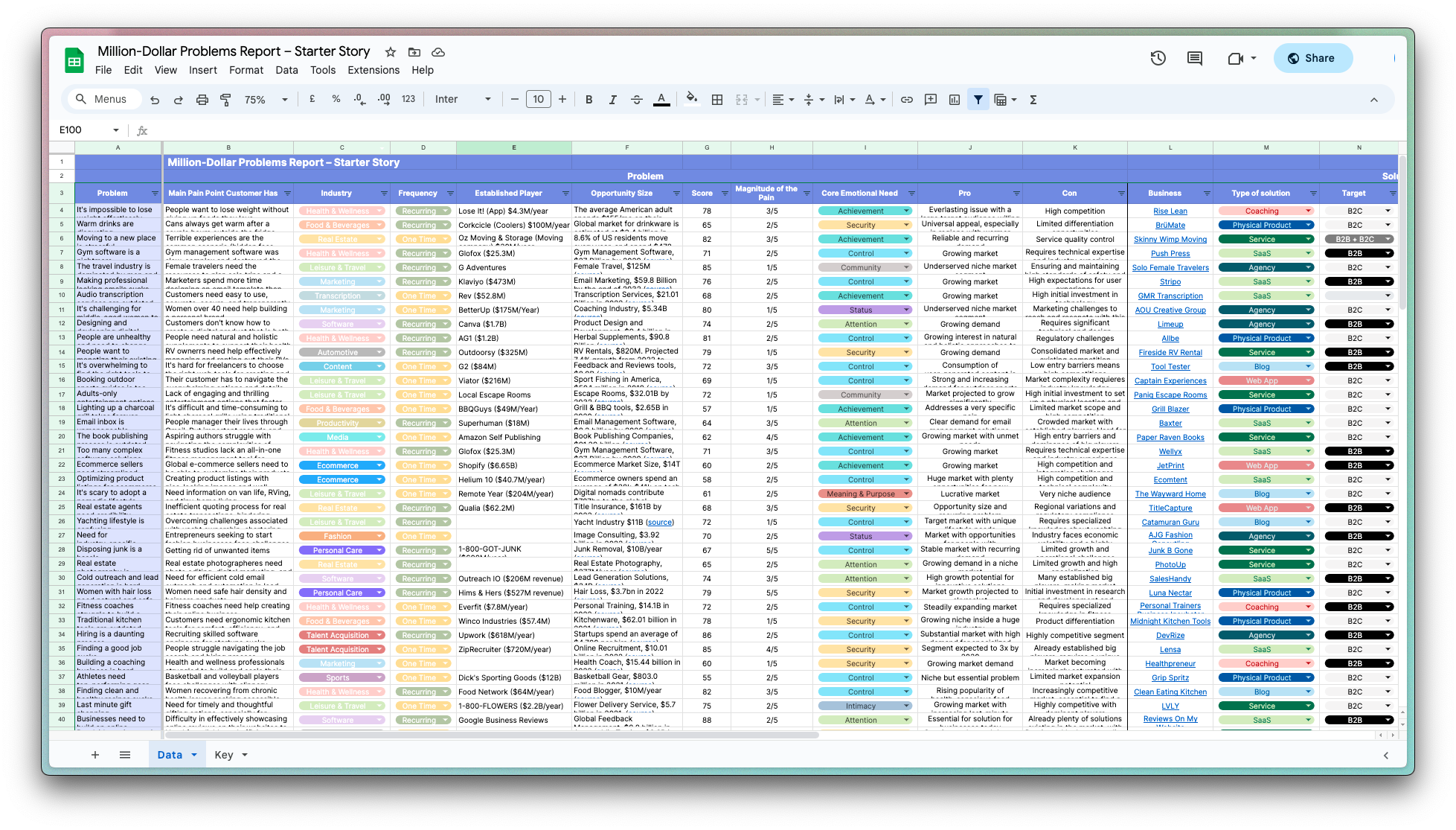|
|
|
$20K
monthly
|
30
days
|
$0.12
per visitor
|
$50
to start
|
91
out of 100
|
|
|
|
|
|
|
|
$55K
monthly
|
30
days
|
$0.21
per visitor
|
$1K
to start
|
91
out of 100
|
|
|
|
|
|
|
|
$117K
monthly
|
—
days
|
—
per visitor
|
—
to start
|
72
out of 100
|
|
|
|
|
|
|
'Community platform for digital nomads worldwide'
|
$266K
monthly
|
60
days
|
$0.43
per visitor
|
$150
to start
|
80
out of 100
|
|
|
|
|
|
|
|
$30K
monthly
|
—
days
|
—
per visitor
|
$15K
to start
|
76
out of 100
|
|
|
|
|
|
|
|
$3.6K
monthly
|
—
days
|
—
per visitor
|
$100
to start
|
82
out of 100
|
|
|
|
|
|
|
|
$7.5K
monthly
|
—
days
|
—
per visitor
|
—
to start
|
50
out of 100
|
|
|
|
|
|
|
Luxury yacht and supercar rentals in Dubai.
|
$12M
monthly
|
—
days
|
$3,000,000.00
per visitor
|
$1M
to start
|
50
out of 100
|
|
|
|
|
|
|
|
$150K
monthly
|
270
days
|
—
per visitor
|
$100K
to start
|
68
out of 100
|
|
|
|
|
|
|
|
$1.59M
monthly
|
180
days
|
—
per visitor
|
$500K
to start
|
58
out of 100
|
|
|
|
|
|
|
|
$1K
monthly
|
—
days
|
—
per visitor
|
—
to start
|
72
out of 100
|
|
|
|
|
|
|
Mobility scooter rentals for Los Angeles tourists.
|
$5K
monthly
|
7
days
|
—
per visitor
|
$500
to start
|
90
out of 100
|
|
|
|
|
|
|
|
$54K
monthly
|
30
days
|
—
per visitor
|
$1.5K
to start
|
81
out of 100
|
|
|
|
|
|
|
Tourism-focused SEO and content marketing agency.
|
$35K
monthly
|
60
days
|
—
per visitor
|
$100
to start
|
72
out of 100
|
|
|
|
|
|
|
|
$1.6M
monthly
|
60
days
|
—
per visitor
|
$500
to start
|
72
out of 100
|
|
|
|
|
|
|
|
$4K
monthly
|
365
days
|
—
per visitor
|
$20K
to start
|
89
out of 100
|
|
|
|
|
|
|
Telegram bot for tracking cheap flight prices.
|
$8K
monthly
|
—
days
|
—
per visitor
|
$0
to start
|
90
out of 100
|
|
|
|
|
|
|
Platform for booking outdoor sports guides easily.
|
$100K
monthly
|
—
days
|
—
per visitor
|
—
to start
|
54
out of 100
|
|
|
|
|
|
|
|
$30K
monthly
|
180
days
|
—
per visitor
|
$35K
to start
|
76
out of 100
|
|
|
|
|
|
|
Wildlife podcast about surviving animal attacks.
|
$400
monthly
|
60
days
|
—
per visitor
|
—
to start
|
72
out of 100
|
|
|
|
|
|
|
"Sri Lanka & Maldives tour packages provider."
|
$20K
monthly
|
90
days
|
—
per visitor
|
$1K
to start
|
81
out of 100
|
|
|
|
|
|
|
|
$18K
monthly
|
90
days
|
—
per visitor
|
$18K
to start
|
69
out of 100
|
|
|
|
|
|
|
|
$10K
monthly
|
365
days
|
—
per visitor
|
$1K
to start
|
90
out of 100
|
|
|
|
|
|
|
|
$25K
monthly
|
3
days
|
—
per visitor
|
$20K
to start
|
89
out of 100
|
|
|
|
|
























